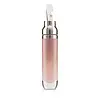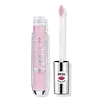What's inside
What's inside
 Key Ingredients
Key Ingredients

 Benefits
Benefits

 Concerns
Concerns

 Ingredients Side-by-side
Ingredients Side-by-side

Vp/Va Copolymer
Butyrospermum Parkii Butter
Skin ConditioningTocopheryl Acetate
AntioxidantSodium Hyaluronate
HumectantCucumis Sativus Fruit Extract
EmollientSesamum Indicum Seed Oil
EmollientEucalyptus Globulus Leaf Oil
PerfumingMedicago Sativa Seed Powder
Skin ConditioningSesamum Indicum Seed Powder
Skin ConditioningPrunus Amygdalus Dulcis Seed Meal
AbrasiveHordeum Vulgare Extract
EmollientSalicornia Herbacea Extract
Skin ConditioningHelianthus Annuus Seedcake
AbrasiveOlea Europaea Fruit Oil
MaskingCitrus Aurantifolia Peel Extract
CleansingHelianthus Annuus Seed Wax
Skin ConditioningPersea Gratissima Oil
Skin ConditioningRicinus Communis Seed Oil
MaskingTheobroma Grandiflorum Seed Butter
Skin ConditioningCocos Nucifera Oil
MaskingAstrocaryum Murumuru Seed Butter
EmollientNiacin
SmoothingMagnesium Gluconate
Skin ConditioningZinc Gluconate
Skin ConditioningCalcium Gluconate
HumectantCopper Gluconate
Skin ConditioningSodium Gluconate
Skin ConditioningPalmitoyl Tripeptide-1
Skin ConditioningTourmaline
Malachite
Skin ConditioningPhytosphingosine
Skin ConditioningMenthyl PCA
HumectantPhytosterols
Skin ConditioningTribehenin
EmollientGlycerin
HumectantAcetyl Glucosamine
Skin ConditioningCholesterol
EmollientCaprylic/Capric Triglyceride
MaskingMenthoxypropanediol
MaskingEthylhexyl Palmitate
EmollientSimethicone
EmollientCalcium Aluminum Borosilicate
Calcium Sodium Borosilicate
Synthetic Fluorphlogopite
Aluminum Calcium Sodium Silicate
CI 77220
Cosmetic ColorantSilica
AbrasiveTin Oxide
AbrasiveWater
Skin ConditioningButylene/Ethylene/Styrene Copolymer
Titanium/Titanium Dioxide
Cosmetic ColorantPolyethylene Terephthalate
Propylene Glycol Dicaprate
EmollientPalmitic Acid
EmollientOleic Acid
EmollientEthylhexyl Hydroxystearate
EmollientSorbitan Isostearate
EmulsifyingGlyceryl Distearate
EmollientAlcohol Denat.
AntimicrobialHydrogenated Castor Oil
EmollientAroma
Linalool
PerfumingLimonene
PerfumingBenzyl Benzoate
AntimicrobialSodium Saccharin
MaskingBHT
AntioxidantTocopheryl Succinate
AntioxidantTetrahexyldecyl Ascorbate
AntioxidantAlumina
AbrasiveAcrylates Copolymer
Mica
Cosmetic ColorantCI 77891
Cosmetic ColorantCI 77492
Cosmetic ColorantCI 77491
Cosmetic ColorantCI 77499
Cosmetic ColorantCI 77163
Cosmetic ColorantCI 42090
Cosmetic ColorantCI 77400
Cosmetic ColorantCI 75470
Cosmetic ColorantCI 15850
Cosmetic ColorantCI 45380
Cosmetic ColorantCI 45410
Cosmetic ColorantCI 73360
Cosmetic ColorantCI 17200
Cosmetic ColorantCI 19140
Cosmetic ColorantCI 15985
Cosmetic ColorantVp/Va Copolymer, Butyrospermum Parkii Butter, Tocopheryl Acetate, Sodium Hyaluronate, Cucumis Sativus Fruit Extract, Sesamum Indicum Seed Oil, Eucalyptus Globulus Leaf Oil, Medicago Sativa Seed Powder, Sesamum Indicum Seed Powder, Prunus Amygdalus Dulcis Seed Meal, Hordeum Vulgare Extract, Salicornia Herbacea Extract, Helianthus Annuus Seedcake, Olea Europaea Fruit Oil, Citrus Aurantifolia Peel Extract, Helianthus Annuus Seed Wax, Persea Gratissima Oil, Ricinus Communis Seed Oil, Theobroma Grandiflorum Seed Butter, Cocos Nucifera Oil, Astrocaryum Murumuru Seed Butter, Niacin, Magnesium Gluconate, Zinc Gluconate, Calcium Gluconate, Copper Gluconate, Sodium Gluconate, Palmitoyl Tripeptide-1, Tourmaline, Malachite, Phytosphingosine, Menthyl PCA, Phytosterols, Tribehenin, Glycerin, Acetyl Glucosamine, Cholesterol, Caprylic/Capric Triglyceride, Menthoxypropanediol, Ethylhexyl Palmitate, Simethicone, Calcium Aluminum Borosilicate, Calcium Sodium Borosilicate, Synthetic Fluorphlogopite, Aluminum Calcium Sodium Silicate, CI 77220, Silica, Tin Oxide, Water, Butylene/Ethylene/Styrene Copolymer, Titanium/Titanium Dioxide, Polyethylene Terephthalate, Propylene Glycol Dicaprate, Palmitic Acid, Oleic Acid, Ethylhexyl Hydroxystearate, Sorbitan Isostearate, Glyceryl Distearate, Alcohol Denat., Hydrogenated Castor Oil, Aroma, Linalool, Limonene, Benzyl Benzoate, Sodium Saccharin, BHT, Tocopheryl Succinate, Tetrahexyldecyl Ascorbate, Alumina, Acrylates Copolymer, Mica, CI 77891, CI 77492, CI 77491, CI 77499, CI 77163, CI 42090, CI 77400, CI 75470, CI 15850, CI 45380, CI 45410, CI 73360, CI 17200, CI 19140, CI 15985
Polybutene
Hydrogenated Polyisobutene
EmollientOctyldodecanol
EmollientSilica Dimethyl Silylate
EmollientTrimethylolpropane Triisostearate
EmollientHydrogenated Styrene/Isoprene Copolymer
Caprylic/Capric Triglyceride
MaskingMenthol
MaskingCaprylyl Glycol
EmollientBenzyl Nicotinate
Skin ConditioningSynthetic Fluorphlogopite
Octyldodecyl Stearoyl Stearate
EmollientMica
Cosmetic ColorantCI 77120
Cosmetic ColorantVp/Hexadecene Copolymer
Aroma
CI 15850
Cosmetic ColorantCI 42090
Cosmetic ColorantCI 77491
Cosmetic ColorantCI 77891
Cosmetic ColorantPentaerythrityl Tetra-Di-T-Butyl Hydroxyhydrocinnamate
AntioxidantEthyl Vanillin
MaskingPolybutene, Hydrogenated Polyisobutene, Octyldodecanol, Silica Dimethyl Silylate, Trimethylolpropane Triisostearate, Hydrogenated Styrene/Isoprene Copolymer, Caprylic/Capric Triglyceride, Menthol, Caprylyl Glycol, Benzyl Nicotinate, Synthetic Fluorphlogopite, Octyldodecyl Stearoyl Stearate, Mica, CI 77120, Vp/Hexadecene Copolymer, Aroma, CI 15850, CI 42090, CI 77491, CI 77891, Pentaerythrityl Tetra-Di-T-Butyl Hydroxyhydrocinnamate, Ethyl Vanillin
 Reviews
Reviews

Ingredients Explained
These ingredients are found in both products.
Ingredients higher up in an ingredient list are typically present in a larger amount.
Aroma refers to an ingredient, or mixture of ingredients, that impart or mask a flavor.
The name is slightly confusing. This is because INCI associates aroma with flavor instead of smell.
Here is the official definition from the The International Cosmetic Ingredient Dictionary and Handbook:
“Aroma is a term for ingredient labeling used to identify that a product contains a material or combination of materials normally added to a cosmetic to produce or to mask a particular flavor.”
INCI shows the only purpose of aroma to be "flavouring".
However, due to regulation differences, some companies may use aroma in place of parfum.
In Canada, this ingredient only has to be listed in concentrations above 1%.
Learn more about AromaThis ingredient is an emollient, solvent, and texture enhancer. It is considered a skin-softener by helping the skin prevent moisture loss.
It helps thicken a product's formula and makes it easier to spread by dissolving clumping compounds.
Caprylic Triglyceride is made by combining glycerin with coconut oil, forming a clear liquid.
While there is an assumption Caprylic Triglyceride can clog pores due to it being derived from coconut oil, there is no research supporting this.
Learn more about Caprylic/Capric TriglycerideCi 15850 is the pigment color red. It is an azo dye and created synthetically.
Azo dyes need to be thoroughly purified before use. This allows them to be more stable and longer-lasting.
This ingredient is common in foundations, lipsticks, and blushes. This color is described as brown/orangey red.
It has many secondary names such as Red 6 and Red 7. According to a manufacturer, Red 6 usually contains aluminum.
Learn more about CI 15850Ci 42090 is a synthetic dye created from petroleum. It is used to give a bright blue color to cosmetics, medicine, and food.
Ci 77491 is also hydrated iron III oxide. It's sole purpose is to give a red/pink hue to products.
Iron III oxides are classified as inorganic chemicals for coloring.
Synthetically created Ci 77491 is considered safer than those naturally found. This is because the synthetically created version may contain less impurities. Iron oxides are generally non-toxic and non-allergenic.
Learn more about CI 77491Ci 77891 is a white pigment from Titanium dioxide. It is naturally found in minerals such as rutile and ilmenite.
It's main function is to add a white color to cosmetics. It can also be mixed with other colors to create different shades.
Ci 77891 is commonly found in sunscreens due to its ability to block UV rays.
Learn more about CI 77891Mica is a naturally occurring mineral used to add shimmer and color in cosmetics. It can also help improve the texture of a product or give it an opaque, white/silver color.
Serecite is the name for very fine but ragged grains of mica.
This ingredient is often coated with metal oxides like titanium dioxide. Trace amounts of heavy metals may be found in mica, but these metals are not harmful in our personal products.
Mica has been used since prehistoric times throughout the world. Ancient Egyptian, Indian, Greek, Roman, Aztec, and Chinese civilizations have used mica.
Learn more about MicaSynthetic Fluorphlogopite is the synthethic version of mica. It consists of fluorine, aluminum and silicate.
Synthetic Fluorphlogopite is used to add volume to products.
It is considered non-irritating on the skin.
Learn more about Synthetic Fluorphlogopite